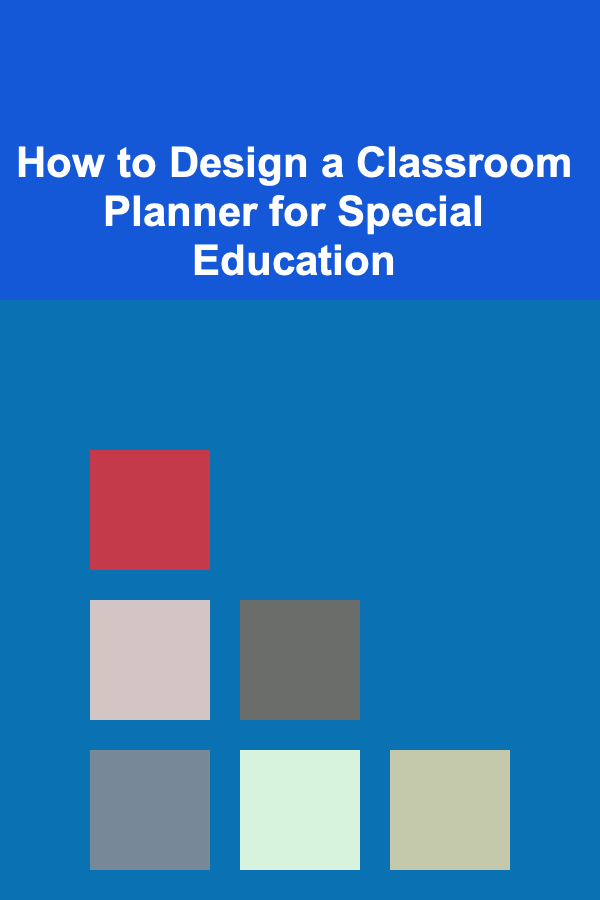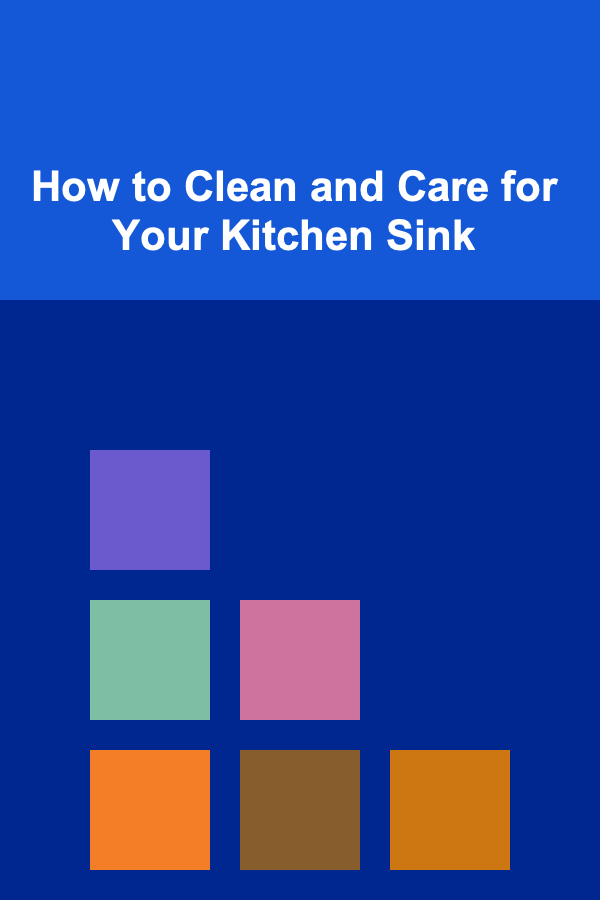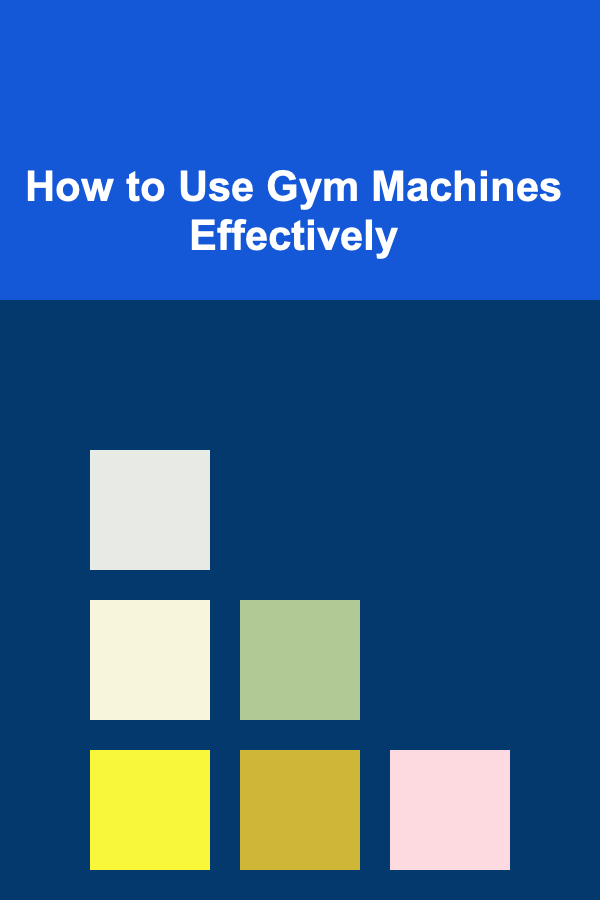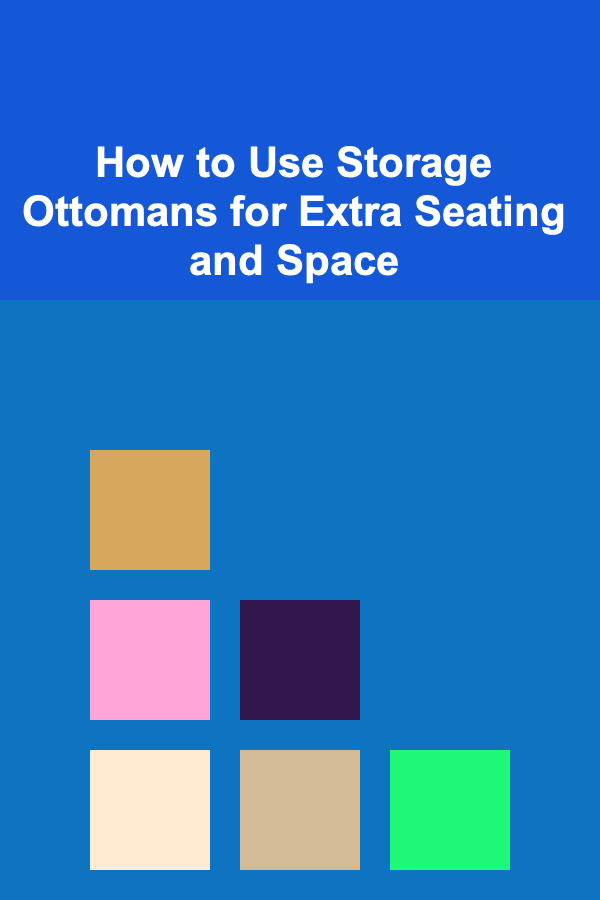
How to Design a Classroom Planner for Special Education
ebook include PDF & Audio bundle (Micro Guide)
$12.99$8.99
Limited Time Offer! Order within the next:

Special education classrooms require unique planning and organization due to the diverse needs of students. A well-designed classroom planner can help teachers manage the academic, behavioral, and social needs of their students while creating an inclusive and supportive learning environment. In this article, we will explore how to design a classroom planner for special education, discussing its key components, design tips, and how it can be customized to meet the specific needs of individual students.
Why is a Classroom Planner Important for Special Education?
A classroom planner in special education serves multiple purposes:
- Organization: Special education classrooms often involve a wide variety of activities, materials, and resources. A well-organized planner ensures that teachers can keep track of daily routines, schedules, and individualized education plans (IEPs) for each student.
- Consistency: Students in special education benefit from a consistent and predictable routine. A classroom planner helps maintain consistency, which can be particularly helpful for students with autism, ADHD, or other cognitive or behavioral conditions.
- Tracking Progress: Teachers use planners to monitor and record students' progress, track their goals, and plan interventions. A well-structured planner allows for regular updates and adjustments based on students' individual needs.
- Behavioral Support: Many students in special education benefit from individualized behavioral support strategies. A planner can be used to track behavior goals, positive reinforcement strategies, and any behavioral incidents, ensuring that interventions are consistent and timely.
- Collaboration: Special education teachers often collaborate with other professionals, such as speech therapists, occupational therapists, and paraprofessionals. A shared planner can be a tool for communication and coordination, ensuring that everyone is on the same page regarding student progress and needs.
Key Components of a Special Education Classroom Planner
A special education classroom planner should include several critical components that can address the various needs of students. Below are some of the key features that should be incorporated:
1. Student Information Section
Every classroom planner should include an individualized section for each student. This section should provide essential information, such as:
- Student Profile: Name, age, grade, and any relevant medical or educational background.
- IEP Goals: A list of each student's Individualized Education Plan (IEP) goals. These goals should be broken down into measurable objectives, with a space for tracking progress.
- Accommodations and Modifications: Any accommodations or modifications the student requires in the classroom, such as preferential seating, extended time for assignments, or the use of assistive technology.
- Behavioral Plans: Any behavioral interventions, positive reinforcement techniques, or behavioral goals specific to the student.
2. Daily Schedule
A structured daily schedule is crucial in special education classrooms, as it provides predictability and security for students. Include the following elements in the daily schedule section of the planner:
- Block Times: Break the day into manageable blocks (e.g., morning work, math, lunch, recess, afternoon activities). Include the time and a description of what will happen during each block.
- Specialized Services: Include sections for when the student will receive specialized services, such as speech therapy, occupational therapy, or one-on-one support from a paraprofessional.
- Transitions: Many students in special education struggle with transitions, so include reminders for when transitions are happening throughout the day. You can also include strategies for making transitions smoother (e.g., visual timers or cue cards).
3. Student Progress Tracking
Progress tracking is essential to ensure that students are meeting their goals and to make necessary adjustments to their learning plans. Include:
- Goal Monitoring: A section to track each student's progress toward their IEP goals. This could be done through checklists or numerical progress indicators.
- Behavioral Tracking: A system for recording behavioral observations, incidents, or successes. This can be a daily log of positive behavior, behavioral incidents, or areas that need improvement.
- Assessment Records: A place to document assessments, quizzes, or evaluations of academic progress, as well as notes on how students are responding to interventions.
4. Individualized Support and Strategies
Every student in a special education classroom has different needs, so the planner should allow for customization. Include:
- Differentiated Instruction Strategies: A section for each student detailing specific teaching methods, strategies, and tools that work best for them. For example, a student with ADHD may need frequent breaks or visual aids.
- Accommodations Checklist: A checklist of accommodations to ensure that teachers implement them consistently. This could include things like the use of fidget tools, extra time on tests, or modified assignments.
- Behavioral Reinforcement: Include strategies for reinforcing positive behavior, such as reward charts, token systems, or behavior charts.
5. Monthly and Weekly Planning Sections
The planner should include monthly and weekly pages where teachers can plan lessons, activities, and assessments. Some key elements to include are:
- Lesson Plans: Space for teachers to write detailed lesson plans, including adaptations for different learners. This should also include materials needed for each activity and any assistive technologies required.
- Weekly Focus: A section to outline a specific weekly theme or focus, such as focusing on social skills or an academic subject like math or reading.
- Weekly Reflection: A space for teachers to reflect on what worked well during the week, what challenges arose, and what adjustments need to be made moving forward.
6. Communication Log
Effective communication between the teacher, parents, and other professionals is key in special education. The planner should include a section for communication logs that can be used to:
- Record Parent and Teacher Communication: A place to document phone calls, emails, or meetings with parents, ensuring that everyone stays informed.
- Collaborative Notes: A section for special education staff, therapists, and paraprofessionals to note observations or feedback regarding the student's performance.
- Team Collaboration: A space for recording notes from team meetings or progress reviews to ensure that strategies are aligned and everyone is aware of changes or updates in the student's education plan.
Design Tips for Creating a Special Education Classroom Planner
Designing a classroom planner that is functional and visually appealing can make a big difference in its effectiveness. Here are some design tips to keep in mind:
1. Keep It Simple and Organized
Special education classrooms can be complex, so it's important that the planner is clear, organized, and easy to navigate. Use simple layouts with clearly labeled sections. Opt for large fonts and plenty of white space to reduce visual clutter.
2. Use Color Coding
Color coding can help organize different sections and make it easier for teachers to locate information quickly. For example:
- Use different colors for student progress tracking, lesson plans, and behavior charts.
- Highlight important dates or events in the calendar section.
3. Incorporate Visual Aids
Visual aids can be helpful for students with autism or learning disabilities. If appropriate, incorporate visual cues into the planner. For example, use pictograms or symbols to indicate different activities in the daily schedule.
4. Ensure Flexibility
Every student is different, and their needs may change over time. The planner should be flexible enough to accommodate adjustments to teaching strategies, goals, and accommodations. Include blank sections or areas for notes to allow for easy updates.
5. Use Durable Materials
A special education classroom planner is likely to be used every day and handled frequently. Choose durable materials that can withstand frequent use, such as laminated pages, a spiral binding, or a hardcover format.
6. Include Student-Specific Pages
Since each student has unique needs, a good planner should have customizable sections. Create templates for each student's goals, accommodations, progress, and behavior tracking, and leave enough space for updates and modifications.
Conclusion
Designing a classroom planner for special education requires careful thought and attention to the needs of both students and educators. By incorporating key elements such as individualized student profiles, behavioral tracking, and a clear daily schedule, a planner can help create an organized, consistent, and effective learning environment. Whether you are a special education teacher looking to streamline your day-to-day planning or you are creating a tool for better collaboration, a well-designed planner is an invaluable asset in supporting the success and growth of all students.
A thoughtfully designed planner not only ensures that students' academic and behavioral needs are met but also provides teachers with the tools they need to stay organized and focused on delivering the best educational experience possible.
Reading More From Our Other Websites
- [Home Holiday Decoration 101] How to Incorporate International Holiday Traditions Into Your Home Decor
- [Home Maintenance 101] How to Protect Your Home from Fire Hazards with Simple Maintenance
- [Home Party Planning 101] How to Create a Signature Cocktail That's Sure to Be the Hit of Your Party
- [Star Gazing Tip 101] Best Star‑Gazing Gear for Kids: Engaging the Next Generation of Astronomers
- [Home Party Planning 101] How to Throw an Amazing Eco-Friendly Party on a Budget
- [Organization Tip 101] How to Declutter and Organize Your Bookshelves
- [Home Budget 101] How to Avoid Common Budgeting Mistakes While Managing Home Expenses
- [Home Storage Solution 101] How to Use Floating Shelves for Stylish Storage
- [Home Family Activity 101] How to Make Chore Time Fun with Creative Family Games
- [Metal Stamping Tip 101] How to Use Soft‑Tool Inserts to Extend Die Life in Low‑Volume Production Runs

How to Clean and Care for Your Kitchen Sink
Read More
How to Use Gym Machines Effectively
Read More
How to Use Storage Ottomans for Extra Seating and Space
Read More
How to Choose the Best Food for Your Cat: A Comprehensive Guide
Read More
10 Tips for Securely Storing Legal and Accounting Expense Records
Read More
10 Tips for Painting Restored Furniture with Chalk Paint
Read MoreOther Products

How to Clean and Care for Your Kitchen Sink
Read More
How to Use Gym Machines Effectively
Read More
How to Use Storage Ottomans for Extra Seating and Space
Read More
How to Choose the Best Food for Your Cat: A Comprehensive Guide
Read More
10 Tips for Securely Storing Legal and Accounting Expense Records
Read More